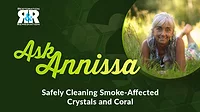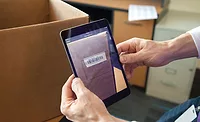Contents Cleaning: How to Successfully and Safely Clean Electronics
The use of de-ionized water, combined with specialized detergents, has revolutionized electronics cleaning and restoration in many ways. Water-based solutions are the safest and most effective way to clean today’s modern electronics.
Even heavily contaminated electronics can be successfully restored to pre-loss condition using this technology. Additionally, lower value electronics which previously would have been thrown away, can be easily and profitably restored. Another important benefit of this process is that it is operator and environmentally safe. Basically, it is detergent and water, without hazardous solvents to contend with.
In fact, all electronics manufacturers use water during the manufacturing process to clean fluxes and other contaminants from components before final assembly, usually by commercial washers or baths, in an assembly line fashion. So if you were to restore electronics, you would really be cleaning them with water for the second time!
Understanding how this process works is important and there are certain skills to learn, procedures to follow and safety precautions to adhere to. But once you have mastered them, you’ll be able to successfully clean almost any electronic item.
Water: The Universal Solvent
Water is referred to as the “universal solvent,” as more materials are soluble (easily dissolved) by water than any other fluid.
The water used for cleaning electronics starts out as plain tap water, but then it’s modified by deionization. Deionized water is virtually non-conductive, and is free from minerals - therefore no residues or deposits will be left on the electronics, yielding a truly clean result.
In addition to the deionized water, the following actions are added: chemical action, which is detergent; thermal action, which is heated water (approx. 120 degrees F); and mechanical action, which is brushing, scrubbing or medium pressure spraying.
The end result is the safest and and most effective way to clean contaminants off of electronics.
What Can be Cleaned?
According to the CEA (Consumer Electronics Association), the average household contains 25 electronic gadgets and this does not include appliances such as microwaves, washers, dryers, refrigerators, stoves and other appliances that have circuit boards and/or computers built in them. Nor does it include computer-aided exercise equipment or shop tools. All these items can easily be restored with soap and water.
The basic act of cleaning electronics is as easy as cleaning typical contents that you might find in a kitchen! Electronics are made up of common materials such as metals, plastics, rubber, glass and ceramic. Cleaning electronics is as simple as removing contaminants off these materials. You don’t have to be familiar with how electronics work, you just need to know how to clean the different materials. The protocol and procedures is what’s unique about electronics, but with training and practice, a nearly 100% success rate is easily attainable.
Although electronic items are only a small portion of the overall contents in a dwelling, it is usually the most profitable cleaning division that you can have within your company. Xactimate and similar programs suggest a very fair pricing schedule for cleaning electronics.
Set Up
A designated area or department in your building should be set up for electronics cleaning. A common problem is re-contaminating electronics after they’ve been cleaned, so an imaginary line should exist between the “dirty” side and the “clean” side of the area. Both sides should have its own disassembly and reassembly bench, with both areas having its own set of tools. You want to avoid using dirty tools used in disassembly when reassembling clean components.
Specialty electronics cleaning machines should be kept on the “dirty” side and drying/deodorizing machines on the “clean” side.
Anti-static precautions in the area also need to be enforced, as two things that can harm electronics are static discharges and magnets. Floor mats, bench mats and grounding straps are mandatory and easy to attain and install.
Guidelines for Electronics Cleaning
1. Evaluation
2. Stabilization
3. Pack Out/Transportation
4. Staging Area with Stabilization
5. Disassembly
6. Processing/Cleaning
7. Drying/Deodorizing
8. Re-assembly/Testing
9. Quality Control
10. Packaging and Deliver
The evaluation process is probably the single most important step to a profitable electronics restoration job. There are several important factors to consider in this process and all of them combine to help you determine what can be successfully restored. The things you should know are:
• When was the contamination event and how much time has passed since?
• If in a fire, how resinous was the fire?
• How close to the heat source were the items?
• Were they exposed to moisture by sprinkler systems or from the fire departments efforts to extinguish the fire?
The reason we should know the answer to these questions is to help determine if oxidization has formed within the electronics. Once oxidation is fully formed, it will degrade and destroy the circuitry, making any restoration impossible!
Also, surface damage, however minor, on any exterior case or cabinet would immediately eliminate that item for cleaning. You cannot return those items to the pre-loss condition. However, cleaning electronics that has normal wear and tear on it is appropriate.
Proper stabilization, which usually is the simple process of getting the moisture out of the electronics, will defer the oxidation process and will buy you time before you have to clean. It is highly suggested that the electronics be dried out as soon as possible after the contamination event occurs.
Disassembly of electronics can be frustrating at times. It’s worth buying the specialized tools made specifically for opening up certain covers. Most electronics can be opened up and prepped within a few minutes, to allow enough access for the wet wash process.
Disassembly, the wet wash and re-assembly is usually a quick procedure. Drying and deodorizing time can vary. For example, a typical desktop computer will average 10 to 15 minutes to open up, wash and put back together. However, the drying/deodorizing cycle could take 4 to 8 hours to complete. If odor issues are not existent in the electronics, then a shorter amount of time is needed for just drying. But if odors are prevalent because of soot contamination, then a longer time in the drying/deodorizing chamber is needed. Since odor is embedded in the materials because of heat from a fire, the best way to remove the odor molecules is by heat in the drying chamber. A common procedure within an electronics restoration division is to clean the electronics and let them dry/deodorize overnight. Over drying cannot damage the electronics and is better than accidently not drying them sufficiently.
In summary, the safest and most effective way to clean and restore electronics is by using deionized water and specialized detergents. When the proper procedures, protocols and safety precautions are implemented, the results will be a highly profitable and successful restoration job.
Looking for a reprint of this article?
From high-res PDFs to custom plaques, order your copy today!





